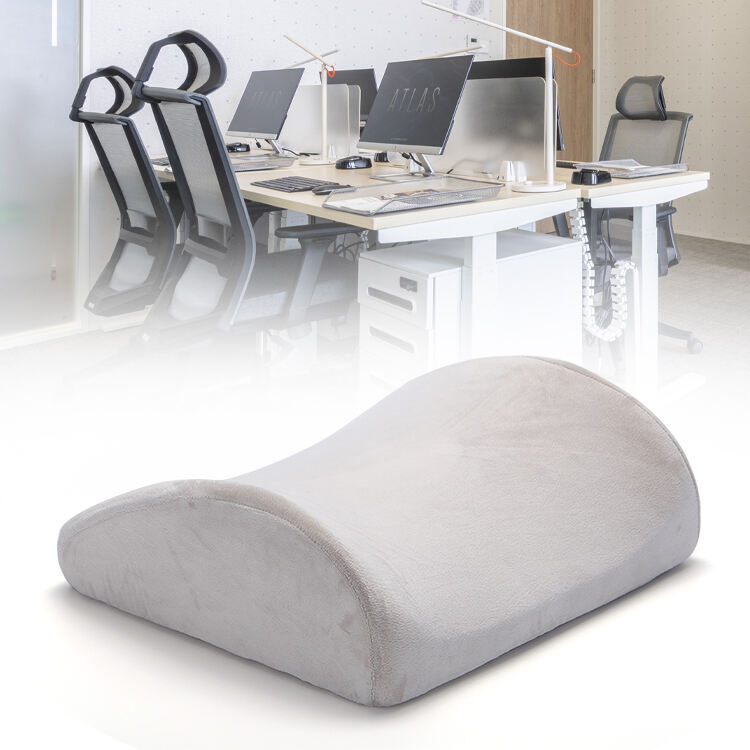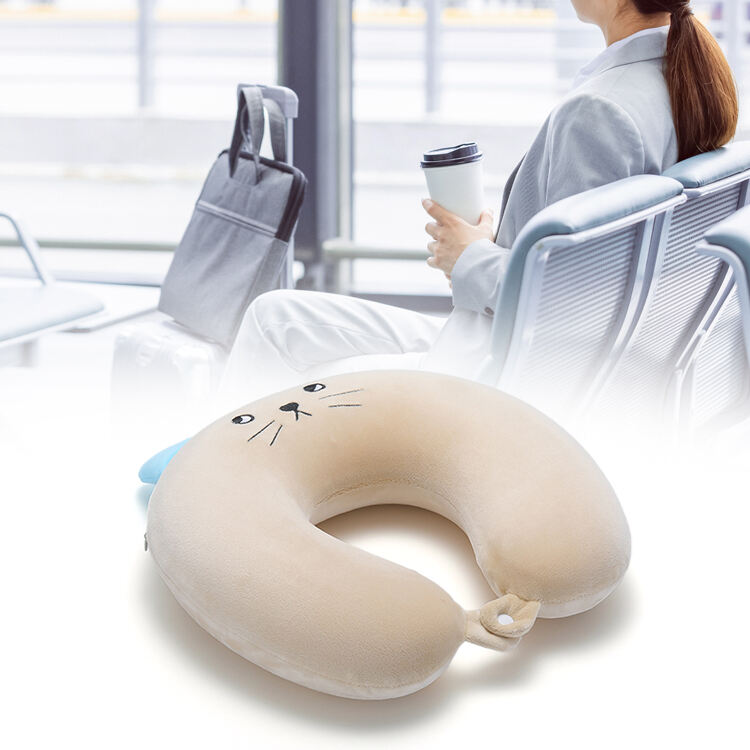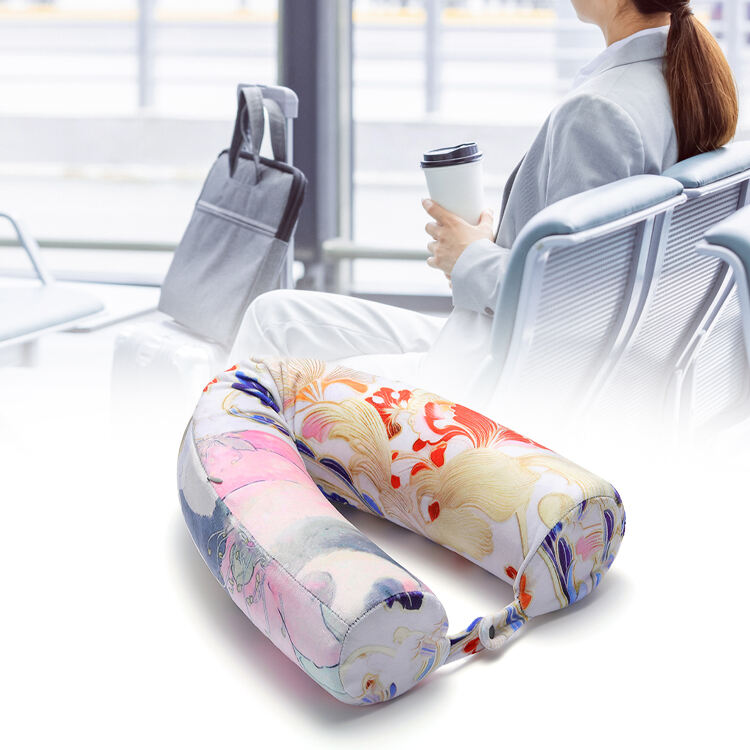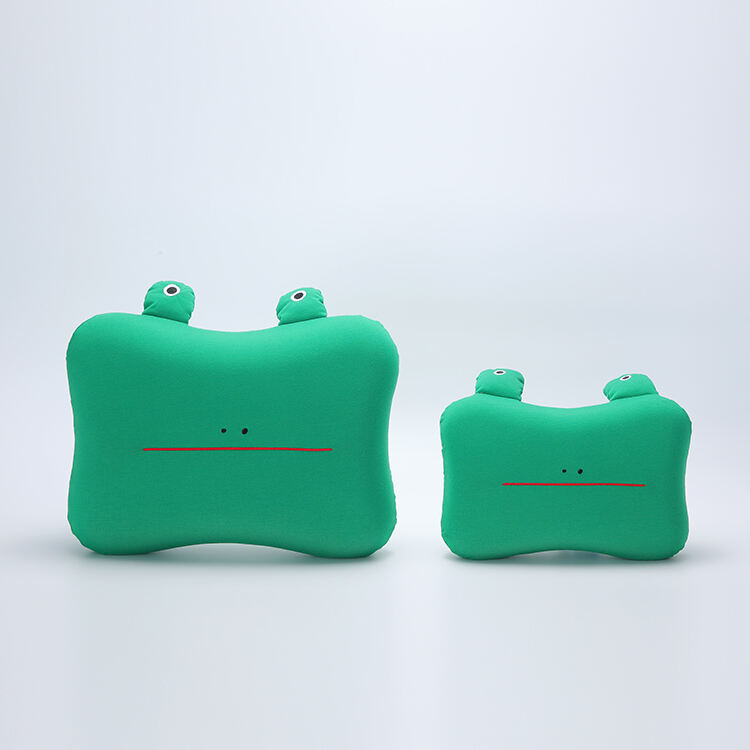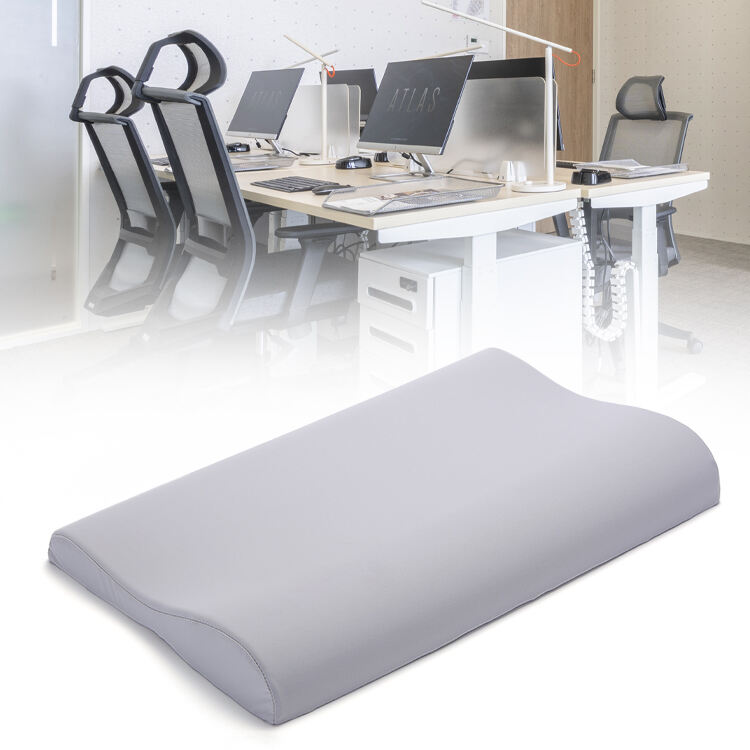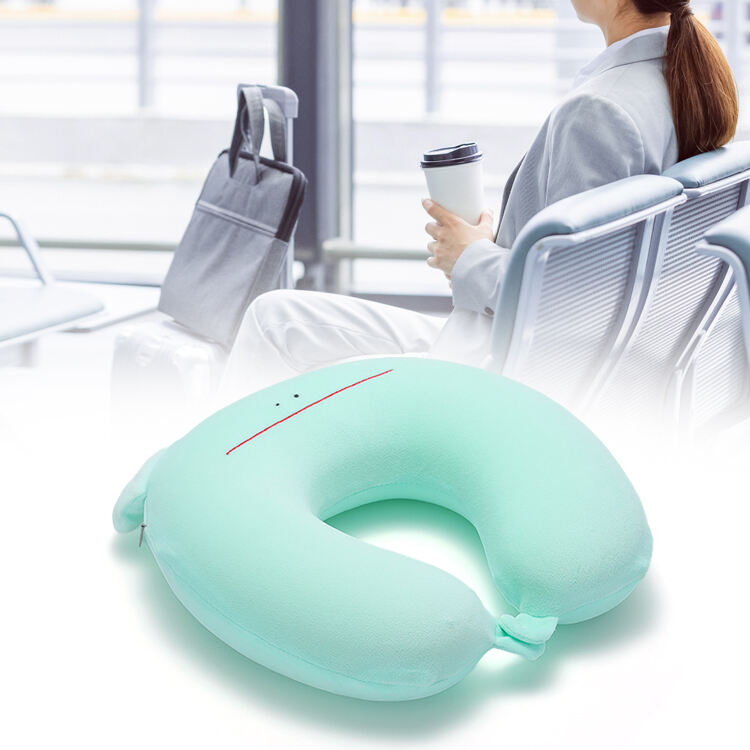لماذا يُهم الإسفنج التذكاري لقيلولة الأطفال
المحاذاة الصحيحة للعمود الفقري أثناء النوم
يساعد الإسفنج الذاكري في الحفاظ على ترتيب العمود الفقري بشكل صحيح أثناء النوم، وهو أمر مهم للغاية للأطفال الذين لا تزال أجسامهم في طور النمو. يأخذ هذا الإسفنج شكل الوضعية التي يتخذها الطفل عند الاستلقاء، مما يوفر دعماً مخصصاً في الأماكن التي يحتاجها أكثر. أظهرت الدراسات أن تحقيق ترتيب جيد للعمود الفقري ليلاً يوقف بشكل فعال الكثير من الانزعاجات ويعزز عادات نوم أفضل على المدى الطويل. عندما يتناسب الإسفنج الذاكري بشكل دقيق مع العمود الفقري، فإنه يخفف الضغط عن العظام والعضلات النامية، لذا لا يستيقظ الأطفال وهم يشعرون بالألم. على الآباء الذين يتطلعون إلى حصول أطفالهم على راحة качествية أن يفكروا جدياً في خيارات الإسفنج الذاكري، نظراً لملاءمته الجيدة لأنواع الأجسام المختلفة، حتى وإن كان ثمنه أعلى قليلاً مقارنة بمواد المراتب التقليدية.
تخفيف الضغط عن الأجسام النامية
يعطي الإسفنج الذاكري الأطفال راحة جيدة من الضغط لأنه يوزع وزن أجسامهم على السطح بالكامل. لا تقوم المواد التقليدية بذلك. في الواقع، يأخذ الإسفنج شكله وفقًا لمختلف وضعيات النوم، وبالتالي يقلل من نقاط الضغط حتى عندما يقلب الأطفال ويجول أثناء قيلولتهم. عندما تختفي تلك المناطق المضغوطة، يميل الأطفال إلى النوم بشكل أفضل بشكل عام دون الاستيقاظ كثيرًا. تشير الأبحاث إلى أن الحصول على تخفيف مناسب للضغط أثناء النوم يؤدي إلى راحة أفضل من حيث الجودة، مما يعني أنهم يستيقظون لاحقًا ويشعرون بالمزيد من السعادة والتركيز. بالنسبة للأجسام النامية، يجعل هذا التكيف مع مختلف وضعيات النوم فرقًا كبيرًا في مستويات الراحة ليلة بعد ليلة.
الحد من التقلّب والانتباه أثناء النوم
تساعد وسائد الراحة ذات الرغوة التذكارية حقًا في تقليل التقلب والتحرك كثيرًا أثناء الليل، لذلك يحصل الأشخاص على نومٍ أفضل من حيث الجودة دون الاستيقاظ كل بضع دقائق. يبدو أن الأطفال يشعرون بالمزيد من الراحة عند الاستلقاء على هذه الوسائد لأن المادة تدعم رؤوسهم وأعناقهم بشكل مناسب. هذا يعني أنهم يظلون نائمين لفترة أطول ويصحون وهم يشعرون بالانتعاش بدلًا من الخمول. أظهرت بعض الدراسات أنه عندما لا يعاني الأطفال من اضطرابات أثناء النوم، فإن أدمغتهم تعمل بشكل أفضل على مدار اليوم ويتعاملون مع مشاعرهم بهدوء أكبر أيضًا. حقيقة أن رغوة الذاكرة لا تتطلب تعديلًا مستمرًا تسمح للأطفال الصغار بالنوم بشكل طبيعي، مما يخلق تلك الظروف المثالية للراحة والتعافي المناسبين.
الميزات الأساسية لوسادة القيلولة من رغوة الذاكرة
المقاس المثالي للأطفال (12×16 بوصة)
يُعد اختيار الوسادة ذات المقاس المناسب أمرًا مهمًا جدًا عند دعم رؤوس وأعناق الأطفال أثناء قيلولتهم. يجد معظم الآباء أن المقاس المحيط بـ 12 × 16 بوصة يعمل بشكل جيد بما يكفي لأنه يوفر الدعم اللازم دون أن يكون كبيرًا جدًا على أجسامهم الصغيرة. في الواقع، يساعد هذا النوع من الأحجام في الحفاظ على توازن أفضل للأطفال، وهو أمر مهم لتطور العمود الفقري لديهم. من ناحية أخرى، إذا كانت الوسائد إما كبيرة جدًا أو صغيرة جدًا، يميل الأطفال إلى التقلب كثيرًا أثناء الليل. لقد رأينا جميعًا ما يحدث عندما لا يتمكن الأطفال من النوم بشكل مريح، صحيح؟ فتتأثر يومياتهم بالكامل بسبب عدم حصولهم على الراحة الكافية.
توازن الدعم المتوسط-الصلب
يعمل اختيار وسادة قيلولة من الإسفنج الذاكري بملمس متوسط إلى صلب بشكل جيد حقًا لأنها تحقق التوازن الصحيح بين الراحة والدعم الكافي لينام الأطفال نومًا جيدًا. إذا كانت الوسادة ناعمة جدًا، فقد ينتهي الأمر بالأطفال الصغار بالانغراق فيها بدلًا من الراحة المناسبة. من ناحية أخرى، تكون الوسادة صلبة جدًا وغير مريحة بالنسبة لمعظم الأطفال. تحقيق هذا التوازن يعني أن رؤوس وأعناق الأطفال تظل مدعومة بشكل جيد طوال القيلولة، وهو أمر يُحدث فرقًا كبيرًا في طريقة نومهم بشكل عام. يميل الأطباء المختصون وأطباء الأطفال إلى توجيه الآباء نحو هذه الوسائد ذات الملمس المتوسط لأنها تتناسب مع كيفية تطور أجسام الأطفال بمرور الوقت مع التأكد من أن فترات الراحة في فترة ما بعد الظهر ليست تجربة غير مريحة.
مواد مضادة للحساسية وقابلة للتنفس
يمكن أن يقلل اختيار مواد خالية من الحساسية لوسائد قيلولة الأطفال بشكل كبير من تلك التفاعلات التحسسية المزعجة، مما يجعل وقت النوم أفضل للجميع. يلعب تدفق الهواء الجيد دوراً مهماً أيضاً لأنه يسمح بمرور الهواء النقي عبر الوسادة، والحفاظ على درجة حرارة مريحة أثناء النوم ومنع تراكم العرق طوال الليل. على الآباء الذين يبحثون عن الوسادة المناسبة للقيلولة التحقق من وجود شهادات تؤكد بالفعل أن المادة لا تحتوي على أي مواد قد تضر بالأطفال الصغار. من الواضح أن السلامة لها الأولوية، ولكن عند اختيار شيء أساسي لقيلولة مريحة، لا ينبغي التفريط في الراحة أيضاً.
شهادة سلامة CertiPUR-US
عند اختيار وسادة قيلولة من الإسفنج التذكاري للأطفال، فإن وجود شهادة CertiPUR-US مهمة للغاية، لأنها تعني أن المنتج يتوافق مع المعايير البيئية والصحية. الوسائد التي تحمل هذه الشهادة تحتوي على مستويات أقل من المركبات العضوية المتطايرة ذات الرائحة الكريهة التي نعرفها جميعًا، ولا تحتوي على أي مواد خطرة أيضًا، مما يخفف من قلق الآباء. بالنسبة للأطفال الصغار الذين لا تزال أجسامهم في طور النمو والتطور، فإن استخدام المنتجات المعتمدة أمر منطقي، لأنها تم اختبارها وفقًا لمتطلبات صارمة للسلامة. يتفق معظم الآباء على أن الشعور بالاطمئنان إزاء عدم احتواء مكان راحة أطفالهم على مواد سامة يمنحك شعورًا أفضل بشكل عام.
حلول وقت القيلولة: تسهيل الانتقال
التعرف على استعداد الطفل لاستخدام الوسادة (من 18 إلى 24 شهرًا)
يبدأ معظم الأطفال الصغار في استخدام وسادة القيلولة في somewhere ما بين 18 إلى 24 شهرًا، وهو ما يميل إلى التزامن مع بلوغهم لفترات نمو معينة. الأطفال في هذا العمر يظهرون غالبًا قدرتهم على الاستلقاء دون مساعدة، وقد يخبرون الوالدين إذا شعروا بشيء غير مريح أثناء القيلولة. ملاحظة هذه الإشارات الصغيرة تساعد في تحسين وقت النوم لهم وتعزز الشعور الإيجابي تجاه القيلولة. عندما يربط الأطفال بين الوسائد والفترة المريحة من الراحة منذ سن مبكرة، فإنهم عادةً يطورون عادات نوم أفضل على المدى الطويل.
إنشاء ارتباطات زمنية لوقت القيلولة
بناء عادات جيدة لوقت القيلولة يُحدث فرقاً كبيراً عندما يتعلق الأمر بمساعدة الأطفال الصغار على الاسترخاء خلال فترة الراحة بعد الظهر. يُلاحظ أن الأطفال يُحققون أداءً أفضل عندما يكون هناك نمط منتظم يمكنهم الاعتماد عليه قبل موعد النوم. ربما يمكنك البدء بخطوة بسيطة مثل قراءة قصة معه أو غناء أغنية خفيفة قبل وضعه في السرير. كما يلعب البيئة المحيطة دوراً مهماً أيضاً. الغرفة الهادئة مع إضاءة خافتة وربما وجود بعض الدمى المألوفة بالقرب يُساهم بشكل كبير في خلق جو دافئ ومريح يحتاجه الطفل للنوم بشكل صحيح. يجد الكثير من الآباء أن هذه التعديلات البسيطة تجعل روتين النوم أكثر سلاسة بشكل عام.
استكشاف مقاومة شائعة وحلها
معركة القيلولة هي شيء يواجهه معظم الآباء في مرحلة ما، عندما يرفض الأطفال الاستسلام للنوم أو البقاء نائمين. المفتاح هنا هو البقاء هادئًا أثناء محاولة معرفة السبب وراء المشكلة: هل هو الخوف من الظلام؟ أم بسبب فراش غير مريح؟ أو ربما شيء ما حدث خلال اليوم؟ بمجرد أن نتمكن من فهم هذه المشكلات الجذرية، فإن تغيير منهجيتنا يُحدث عجائب. إن استخدام مكافآت بسيطة لتعزيز العادات الجيدة في أخذ القيلولة يكون أكثر فعالية على المدى الطويل من الأساليب القسرية. الأطفال الذين يتعلمون ربط القيلولة بتجارب إيجابية يطورون عادةً أنماط نوم أكثر صحة، تمتد لفترة أطول من مرحلة الطفولة المبكرة.
الصيانة من أجل الراحة الدائمة
عناية الوسادة القابلة للغسل في الغسالة
من المهم الحفاظ على نظافة وسائد الذاكرة الرغوية وتمديد عمرها الافتراضي لخلق بيئة نوم أكثر صحة للأطفال. عند تنظيف هذه الوسائد بانتظام، يمكن تقليل أعداد عث الغبار والمواد المسببة للحساسية الأخرى والحفاظ على نظافتها العامة. في الواقع، صمّم العديد من المصنّعين وسائد الراحة ذات الإسفنج الذاكرة بطبقات خارجية قابلة للإزالة يمكن غسلها في الغسالة، مما يسهّل الأمر على مقدمي الرعاية الذين يرغبون في الحفاظ على معايير النظافة. قد يرغب الآباء في وضع روتين معين للتنظيف حتى تبقى الوسادة ذات رائحة جيدة وتدعم بشكل مناسب مع مرور الوقت. عادةً ما تساعد هذه الممارسات في صيانة المنتج لفترة أطول وتحافظ على شعوره الجيد طوال الليالي للأطفال الذين يستخدمونه.
متى يجب استبدال وسادة طفلك
يُعد تغيير وسادة القيلولة الخاصة بالأطفال بشكل دوري أمرًا مفيدًا للحفاظ على الراحة والنظافة. يجد معظم الأشخاص أن استبدال الوسادة كل سنتين إلى ثلاث سنوات هو الأمثل، وذلك بسبب النمو السريع للأطفال. عادةً ما تكون علامات الحاجة إلى وسادة جديدة واضحة، مثل عندما تصبح الوسادة متكتلة، أو تفقد شكلها الأصلي بالكامل، أو تظهر عليها علامات تلف تجعلها غير مستقرة. من خلال فحص مظهر الوسادة ومرونتها من حين لآخر، يمكن للوالدين التأكد من أن أطفالهم ما زالوا يحصلون على الدعم المناسب أثناء النوم في مراحل النمو المهمة. إن التزام الأمهات والآباء بهذا الأمر مهم للغاية، لأن الدعم الصحيح للرأس والرقبة أثناء القيلولة يؤثر فعليًا على جودة نوم الأطفال بشكل عام وعلى شعورهم طوال اليوم.
أسئلة شائعة حول وسائد القيلولة ذات الإسفنج التذكاري
يتساءل الكثير من الآباء والأمهات عما إذا كانت وسائد القيلولة المصنوعة من رغوة الذاكرة مفيدة للأطفال فعلاً. يتركز السؤال الرئيسي حول ما إذا كانت هذه الوسائد توفر الدعم الكافي لأعناق وفقرات الأطفال الصغار خلال مراحل نموهم. يحتاج معظم الأطفال الصغار إلى شيء يدعمهم بشكل مناسب مع الشعور بالراحة عند الاستلقاء عليه. كما يميل الآباء أيضًا إلى طرح الأسئلة حول مدة بقاء هذه الوسائد من رغوة الذاكرة، وما نوع التنظيف الذي يمكن إجراؤه دون التأثير على المادة. في النهاية، يُعد الحفاظ على النظافة أمرًا مهمًا لأسباب صحية. وعادةً ما يوصي الخبراء باستبدال الوسادة كل سنتين أو نحو ذلك، حيث يكبر الأطفال ويختلف نمط نومهم مع مرور الوقت. هذا منطقي، إذ ما يناسب الرضيع قد لا يكون مناسبًا لطفل ما قبل المدرسة بعد ذلك.
